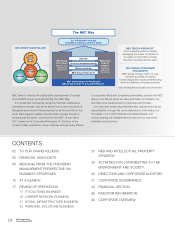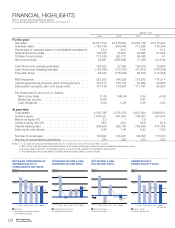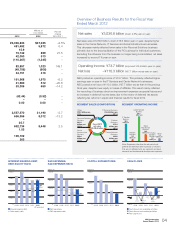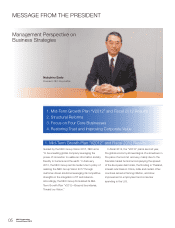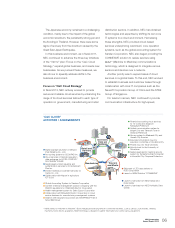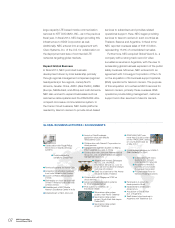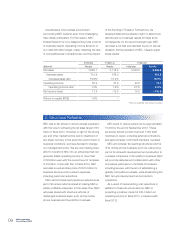NEC 2012 Annual Report Download - page 10
Download and view the complete annual report
Please find page 10 of the 2012 NEC annual report below. You can navigate through the pages in the report by either clicking on the pages listed below, or by using the keyword search tool below to find specific information within the annual report.
Nevertheless, the business environment
surrounding NEC became even more challenging
than initially anticipated. For this reason, NEC
finished fiscal 2012 on a disappointing note in terms
of business results. Operating income fell short of
our initial ¥90 billion target, mainly reflecting the lack
of competitiveness in smartphones, and the impact
of the flooding in Thailand. Furthermore, we
reviewed deferred tax assets in light of Japan’s tax
reforms and our business results for fiscal 2012.
Consequently, for the second straight year, NEC
recorded a net loss and decided to pay no annual
dividend. As the president of NEC, I deeply regret
these results.
(Billion ¥)
FY2010/3 FY2011/3 FY2012/3
Results Results Initial plan Results
Net sales 3,583.1 3,115.4 3,300.0 3,036.8
Overseas sales 712.9 479.3 481.5
Overseas sales ratio 19.9%* 15.4% 15.9%
Operating income 50.9 57.8 90.0 73.7
Operating income ratio 1.4% 1.9% 2.7% 2.4%
Net income (loss) 11.4 –12.5 15.0 –110.3
Return on equity (ROE) 1.6% – –
* 15.6% excluding the semiconductor business
NEC has so far striven to drive business expansion
with the view to achieving its net sales target of ¥4
trillion in fiscal 2013. However, in light of the strong
yen and other market factors and no likelihood of
any sharp recovery in the economic environment or
business conditions, we have decided to change
our management policy. We are now making every
effort to transform NEC into an enterprise that can
generate stable operating income of more than
¥100 billion even with the current level of net sales
of ¥3 trillion. In line with this, in fiscal 2012, NEC
recorded an extraordinary loss of ¥40.5 billion for
business structure improvement expenses,
including personnel reductions.
NEC will first implement personnel reductions as
part of structural reforms aimed at making NEC a
solidly profitable enterprise. At the same time, NEC
will press ahead with structural reforms of
challenged business areas, such as the mobile
phone business and the platform business.
NEC plans to reduce personnel by approximately
10,000 by the end of September 2012. These
personnel should consist of around 7,000 staff
members in Japan, including external contractors,
and approximately 3,000 staff members overseas.
NEC will consider far-reaching structural reforms
of its mobile phone business, such as outsourcing
part of its domestic development and production to
overseas companies. In the platform business, NEC
will promote alliances and collaboration with other
companies particularly in the fields of hardware
including servers, with the aim of establishing a
globally competitive business, while streamlining the
NEC Group’s development and production
operations.
As a result of implementing cost reductions in
addition to these structural reforms, NEC is
projecting a positive impact of ¥40.0 billion on
operating income in fiscal 2013, compared with
fiscal 2012.
2. Structural Reforms
09 NEC Corporation
Annual Report 2012


